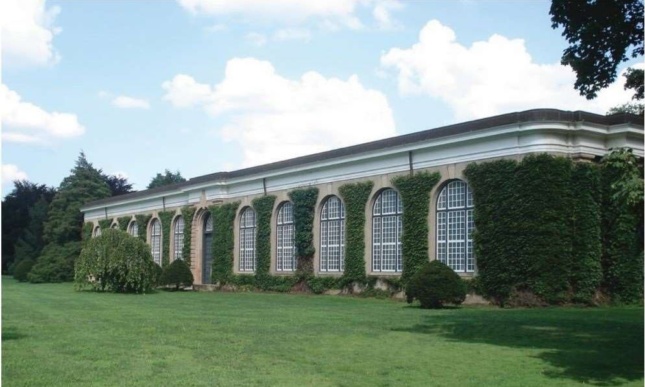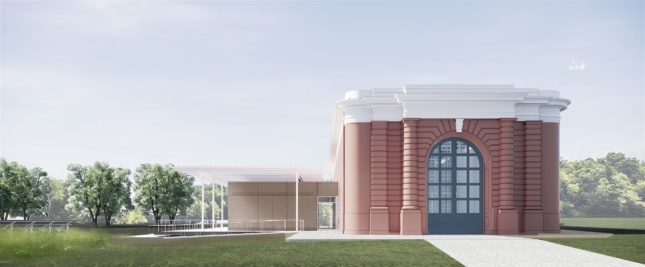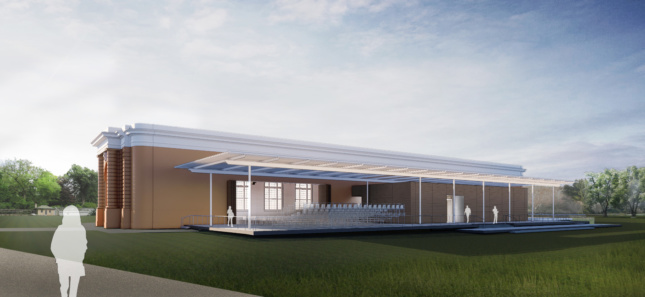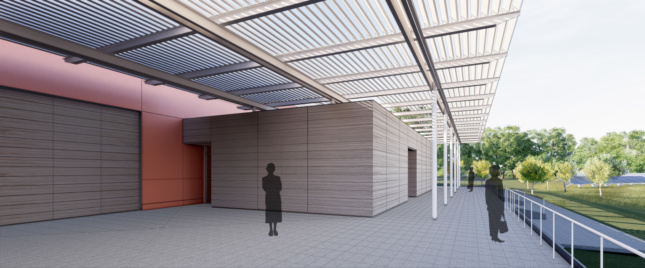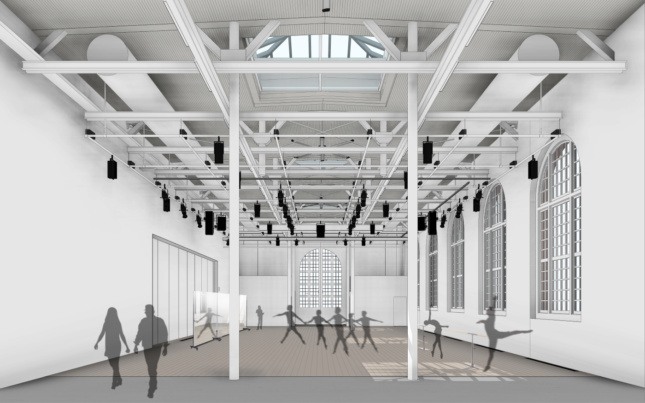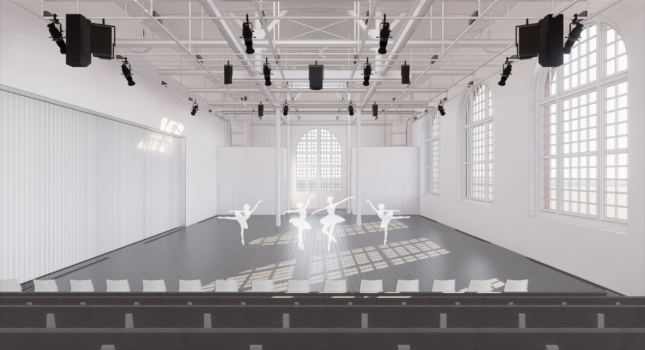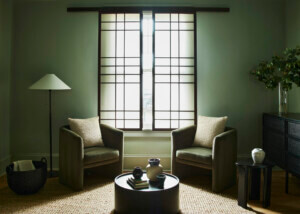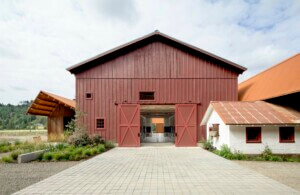Lush, gated properties are not out of the ordinary in the Westchester village of Tarrytown, New York. However, set back upon the Rockefeller family’s former estate lies something entirely out of the ordinary—a stately greenhouse for growing oranges. Built in 1908 by architect William Welles Bosworth, the building served as a winter greenhouse for orange trees, an orangerie. More than a century later, New York-based architecture firm FXCollaborative wants to give “the Orangerie,” a building on the estate, a new purpose, with plans to adapt it into a public arts center with net-zero carbon emissions.
Plans for the David Rockefeller Creative Arts Center began in 2015 at the Pocantico Center, a conference and community resource center developed by the Rockefeller Brothers Fund (RBF) on the former Rockefeller property in Tarrytown. The new center will include multipurpose performance spaces, a gallery, and a flexible art studio that will also accommodate community programs. “The repurposed building will give us space to elevate and nurture the creative process,” said Judy Clark, executive director of the Pocantico Center, “for both emerging and world-class artists, and local community groups alike.”
With an emphasis on sustainability from the very beginning, FXCollaborative’s designs include a rain garden for stormwater control and habitat restoration as well as on-site solar panels that will generate more energy annually than the building will consume. The firm will also seek LEED Platinum certification for the Orangerie in alignment with RBF’s “decades-long commitment to promote sustainable design,” as described by Sylvia Smith, a senior partner at FXCollaborative.
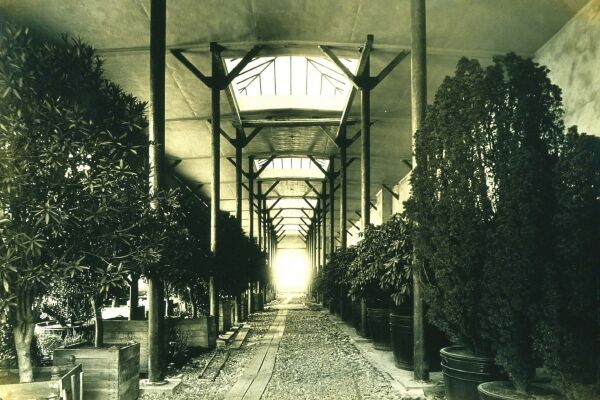
“Our approach will elegantly fuse arts-drive and net-zero energy design,” said Smith. “The result will be a laboratory for creative production and a model for sustainable transformation.”
The regeneration will present a new chapter in the Orangerie’s unusual history on the Rockefeller estate, which has played home to four generations of the family. Post-World War II, the building was used as a storage facility before ownership was transferred to the National Trust for Historic Preservation in 1979. Today, it operates as part of the larger RBF amidst terraced residences and gardens.
“The goal of this project is to see artists and their work as a dynamic work in progress, instead of a static, finished project,” said Smith. “We know Mr. Rockefeller believed art changes the way one perceives the world, and we’re excited to play an important part in facilitating that change in New York.”
Construction for the David Rockefeller Creative Arts Center is set to begin later this year and conclude in the spring of 2021.






